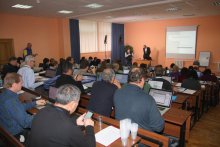

How does one translate culture-specific elements found in ancient Israelite society into languages in which these concepts do not exist? How can these concepts be transferred into the new cultural context of the recipient language and how much adaptation is permissible? These questions, the focus of much scholarly discussion in contemporary Biblical studies, were the focus of IBT’s recent seminar for Bible translation teams on “Bridging the Cultural Gap Between the World of the Bible and the Languages of Russia/CIS”, held outside Moscow in late October.
Specific issues raised included:
- differences in cultural pragmatics, such as acceptable forms of address;
- the culture of the early Christian church in which the New Testament was written;
- the importance of understanding and properly conveying the dimensions of honor and shame, which permeate the pages of Scripture, but are often not well rendered in western European Bible translations;
- the role of patron/client relations in ancient Mediterranean culture;
- translating terminological systems dealing with the spirit world;
and many others.
The seminar was attended by 50 participants from 19 different translation projects. The instructors, experienced specialists in linguistics, anthropology, and Biblical studies, were provided by IBT’s partnering Bible translation agencies (UBS and SIL International). A combination of lectures, discussion, and group work on practical translation assignments allowed seminar participants to wrestle with these difficult questions and try to find an acceptable solution in their own translation projects.

Share: